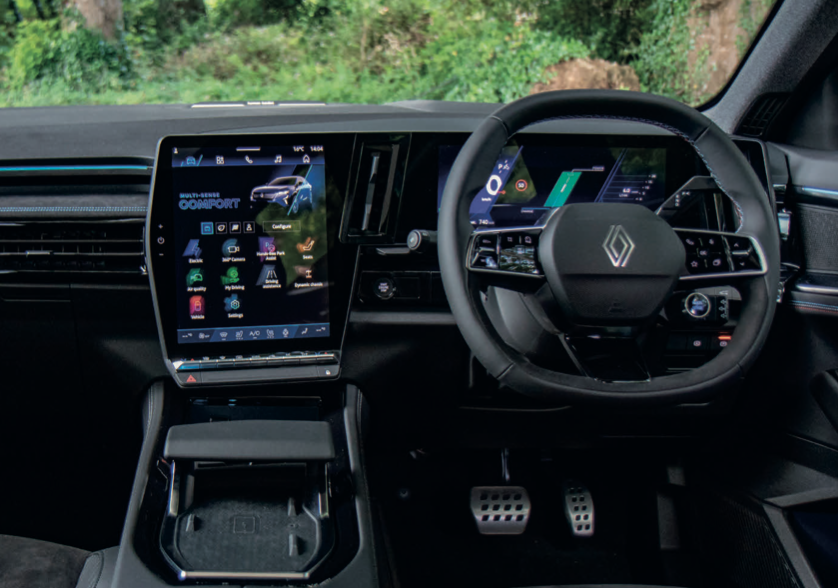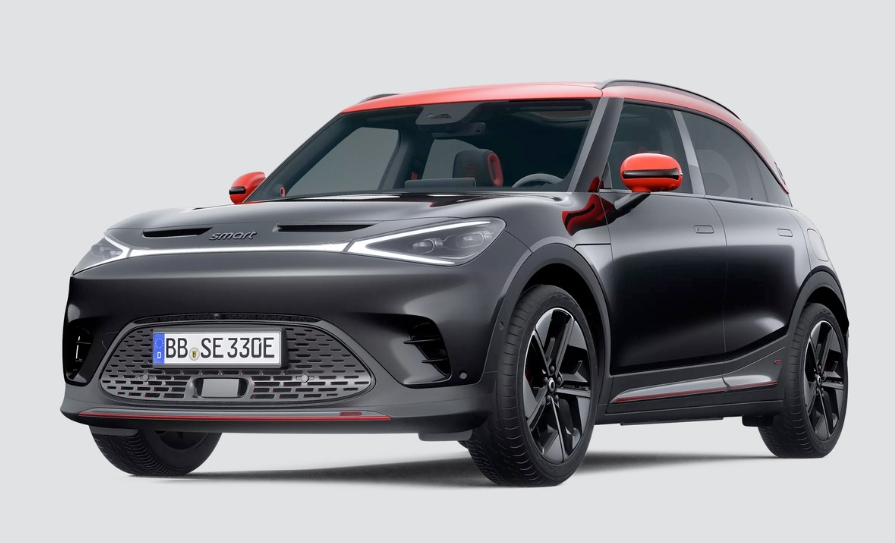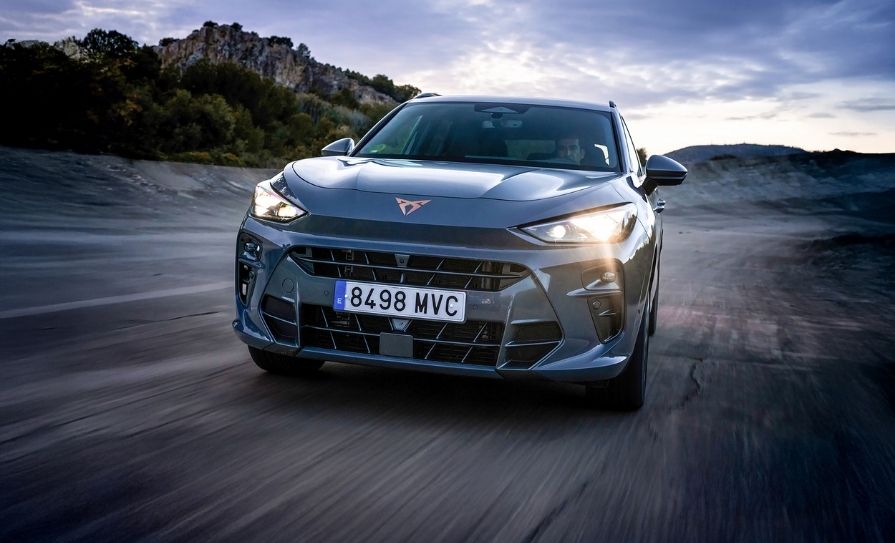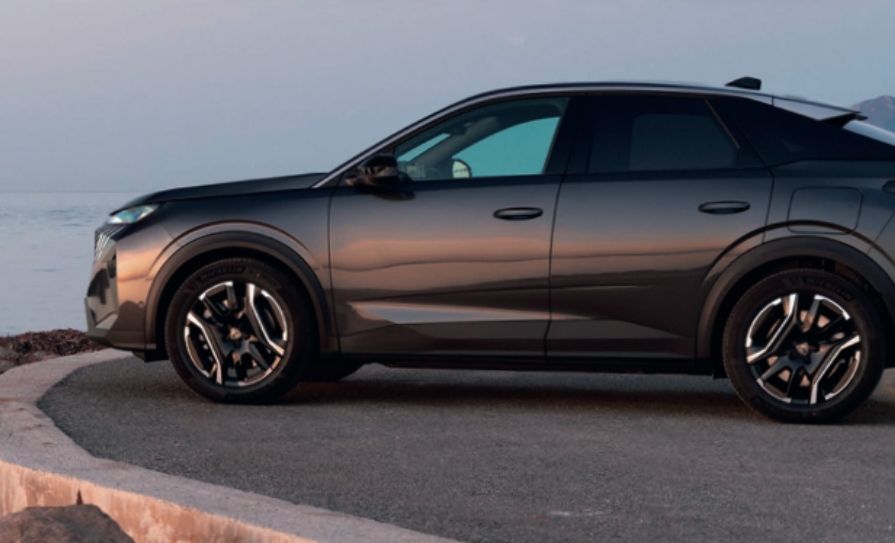Shane O’Donoghue test-drives Renault’s range-topping new SUV
Renault wanted to make a statement with its new range-topping hybrid SUV, and for inspiration it harked back to the 1930s – when the French brand engaged in making engines for trains and planes as much as cars. Focus fell on the Caudron-Renault Rafale of 1934, a beautiful single-seat racing plane. Rafale, the name of the new Renault SUV, actually translates as ‘gust’ from French, and the company must be hoping it can blow buyers away from the default premium options in the market into its showrooms instead.
Exterior design and image
Arresting exterior styling certainly helps with that. Images somewhat disguise its proportions as the Rafale looks squat, purposeful, and somewhat compact.
In fact, at 4.7 metres long, the Renault squares up to the likes of the Audi Q5 and BMW X3, though with a lower roofline for that on-trend coupé-SUV appearance. Highly distinctive, jewel-like lights define the front and rear of the car, while the Renault-diamond badge up front is set into a dazzling 3D pattern of little diamonds in lieu of a traditional radiator grille. It’s an eye-catching vehicle to say the least, especially so when in the top Alpine specification shown here.
Interior and practicality
The Alpine detailing inside is even more impressive, starting with the supportive, bolstered seats up front. You’ll not miss the Alpine ‘A’ logo pulsing (like a heartbeat, says Renault) as you approach the car with the keycard in your pocket, but look closer and there’s also tasteful red, white, and blue stitching in a nod to the car’s country of origin. Tactile materials are found throughout the cabin and the steering wheel, shaped like a squashed circle, is also great to hold. In front of that is a cutting-edge digital dashboard, marrying a customisable instrumentation display with an upright touchscreen in one stylish swathe of glossy plastic. The infotainment runs Google software, so it’s easy to get the hang of and everything is sensibly laid out. It’s packed with connectivity and other features, though we’re happy to report that there are still physical buttons to alter the climate control, minimising distraction when you’re driving.

There are plenty of USB-C ports (in the front and the rear) for charging-up devices and there’s a neat wireless charger integrated into a movable section covering the centre console as well. It can’t be an accident that the chunky lever you grab to slide that cover is reminiscent of a plane’s throttle lever. Look up and you’ll find a subtle silhouette of the plane from the 1930s in the glass roof, as well. What’s more, a space-sapping blind isn’t required, as that panoramic roof uses clever technology to turn sections transparent or opaque as desired – you can even use the Google voice control to do that.
The glass roof ensures that rear passengers don’t feel hemmed in by the sloping roofline, and in fact, there’s acres of space back there for adults or kids in big child seats. Another innovative touch is found between the two outer seats if you fold the central armrest down. It features slots that can hold phones or tablets to allow the rear-seat occupants to watch their screens without having to hold onto them. And behind is a massive boot. This car may trade on its good looks, but they hide family-friendly practicality.
On the road
Odds are that the first time you drive a Renault Rafale you’ll wonder if it’s an EV. This is because it invariably starts in electric mode and, though it has a relatively small battery and no official electric range to speak of, it spends a satisfying amount of time with the engine switched off. Renault calls the system ‘E-Tech Full Hybrid’, but it’s not one you plug in to charge up. Instead, the modest battery is kept charged by a 1.2-litre petrol engine, which hums away in the background when it’s needed.
Such a small unit may seem at odds with the sporty styling, but the hybrid system does muster up to 200hp, which is more than ample, and the electric motor gives the engine a welcome boost that
is particularly noticeable around town.
So make sure you try the car for yourself before dismissing its performance stats.
Only from behind the wheel can you appreciate one of the Rafale’s engineering details. It has four-wheel steering – dubbed ‘4Control’ by Renault – that both aids agility and stability. At speeds below 50km/h the system steers the rear wheels in the opposite direction to the fronts. This makes manoeuvring a joy in
a tight spot as it dramatically reduces the
This car may trade on its good looks, but they hide family- friendly practicality
turning circle, but it also gives the Rafale a satisfying nimbleness in urban driving and tight and twisty country roads. Above that speed, the rear wheels steer in the same direction as the fronts, which enhances stability and safety, making movements such as changing lanes particularly smooth.
Pricing
Topping the Renault line-up, the Rafale starts at €51,495 in the entry-level Techno specification. It’s generously well-equipped, nonetheless, featuring 20-inch alloy wheels, the fully featured infotainment system, and a lot more besides. The Esprit Alpine version brings with it an even more alluring cabin
(and a few other bits and pieces), at €55,695, while those that want all the bells and whistles can upgrade to the Esprit Alpine+ for €58,695. At the time of writing, the Rafale is offered with a single hybrid powertrain, but a plug-in hybrid version with all-wheel drive and a lot more power is also on the cards for launch in 2025. That’ll give buyers of the traditional premium brands even more to think about.







